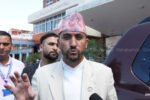KATHMANDU: The fertility rate among adolescents is found to be high in Nepal.
According to the Child Welfare Division, the fertility rate among adolescents (15-19 age group) is 63 percent.
Division senior community nursing administration Kabita Aryal said, “Nepal needs to reduce the fertility rate to 30 percent by 2030 as per the Sustainable Development Goals. In Nepal, the adolescent fertility rate is high and the province-wise data shows that Madhesh and Karnali provinces are ahead of it.”
It is 61 percent in Province 1 while 96 percent in Madhesh, 40 percent in Bagmati, 58 percent in Gandaki, 57 percent in Lumbini, 81 percent in Karnali and 60 percent in the Sudurpaschim.
Teenage pregnancy poses a high risk of unnecessary health complications among expectant mothers and increases the risk of maternal mortality rate.
The chance of dying in adolescent pregnancy is twice high as in 20-24 years of age, according to Aryal.
The existing total fertility rate in Nepal is 2.3 and it was 6.3 in 1976. An increase in marriageable age, use of contraceptive methods, legalization of abortion and spousal separation are among the factors for reduced fertility rate in the country.
She said the unwanted pregnancies will increase with the decline in the access to and use of contraceptives and this will result in an increase in the number of those undergoing unsafe abortion, thereby increasing the risk on women’s health.
According to her, it is also necessary to increase the rate of use of modern contraceptive devices.
Forty-three percent of the population uses contraceptives in Nepal at present.
The government target is to upscale it to 60 percent by 2030.
Similarly, it is stated that the offspring and mother will have better health if children are produced in a gap of three years.
Senior Nursing Administrator Aryal said the maternal death rate will be reduced by 30 percent and the infant mortality rate by 10 percent while giving birth to children in a gap of three years.
Persons undergoing permanent family planning decreasing
The percentage of people undergoing permanent family planning measures has decreased while the number of people using temporary family planning measures has increased in the last one decade.
The percentage of males undergoing vasectomy operation in 2006 was 6.4 and it dropped to 5.5 in 2016.
Likewise, the percentage of women undergoing laparoscopy operation for permanent birth control in 2006 was 18 and this decreased to 14.7 in 2016.
RSS









Comment